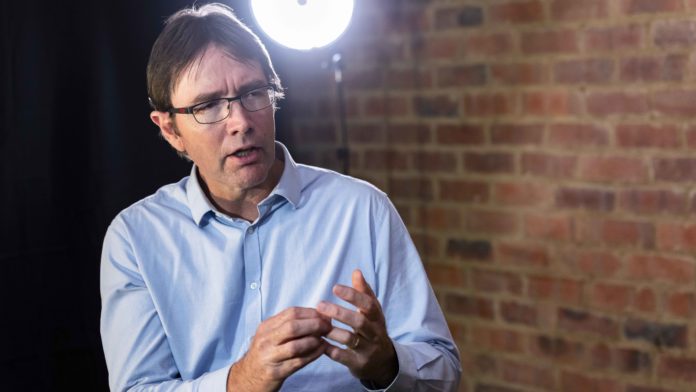
SINCE he returned to South Africa from Canada in 2012, Minerals Council CEO Roger Baxter has been negotiating issues around the Mining Charter with a string of mining ministers of which by far the worst was Mosebenzi Zwane and by far the best is current incumbent Gwede Mantashe.
The improved relationship between the Minerals Council and the Department of Mineral Resources and Energy (DMRE) is hugely important for the future of South Africa, which is why Baxter’s optimistic assessments on progress are being put under the microscope.
Baxter reckons mining has “bailed out” South Africa’s hammered economy from the second half of 2020 and has a huge role to play in the country’s continuing recovery from the Covid-19 pandemic.
But the attitude of long-suffering South African business people is one of “seeing is believing” because whatever is going on is not yet visible to outsiders and the African National Congress (ANC) has a long track record of foot-dragging, stalling, and paying lip service to plans that go against its bedrock socialist ideologies.
Baxter concedes this but points out: “The minister has admitted the licencing regime is a shambles and that Samrad [the South African Minerals Administration] does not work. They have agreed to produce an RFP [request for proposal] for a new, online mining cadastral system, which is a big shift.
“We have negotiated a brand-new exploration draft plan, which they still need to publish, which is a bit frustrating. So there has been progress but that progress is not visible until you see it in the public domain.
“We are on the cusp of seeing some changes but those changes need to be implemented. The proof of the pudding will be in the eating. I can sit here and say we have made all this progress but it counts for nix unless we see an exploration plan released and finalised and see the adoption of a globally competitive mining cadastral system.”
The example that South Africa should be following is that of neighbouring Botswana, which, according to various mining entrepreneurs, is “eating South Africa’s lunch” in attracting new mining exploration investment.
“Botswana has stability and clarity in their framework, with very limited administrative discretion. They don’t change the rules every five years and they are very swift in approving both mining and prospecting rights.”
Baxter maintains that Mantashe is negotiating in good faith with the mining industry to deal with all these issues. “He’s not a lip service man. He has made commitments.”
Legal battles
So, if both sides are getting on so well, why is there still legal action underway between them?
“Just because we take someone to court does not mean we cannot talk about the other issues,” says Baxter. “We are in court over three things of which the issue of renewals, extensions and Section 11s [change of control legislation] is something we must have certainty on but have never been able to agree with the DMRE.”
Asked why it is taking so long to get things done from the government side – for example, industry participants say you can buy an on-line mining cadastre system “off the shelf” – Baxter replies that the South African government has “its own processes”.
Corruption
Baxter attributes government’s slow pace of implementing change to a combination of corruption in the DMRE in prior years; the removal of key competent staff during the “state capture” era; and generally inefficient operating procedures.
He cites Optimum Colliery and the Guptas as a case in point. “The system functioned well for some. They got their Section 11 change of ownership in three weeks, which was record speed for the DMRE.”
He believes that if the agreed steps on the mining cadastral system and the exploration plan are implemented it will be “game changing” for the South Africa mining industry.
The Minerals Council has set targets for the South African mining industry to attract 5% of global exploration spend and increase its contribution to South Africa’s GDP to more than 10%. Baxter reckons that some R30bn in new investments is being held back by constraints such as the uncertain regulatory conditions.
He says those targets are “absolutely realistic” but achieving them requires more than sorting out specific issues affecting the mining industry which are only part of the bigger picture.
For more 2021 Mining Yearbook articles, please visit the special ebook section below.













